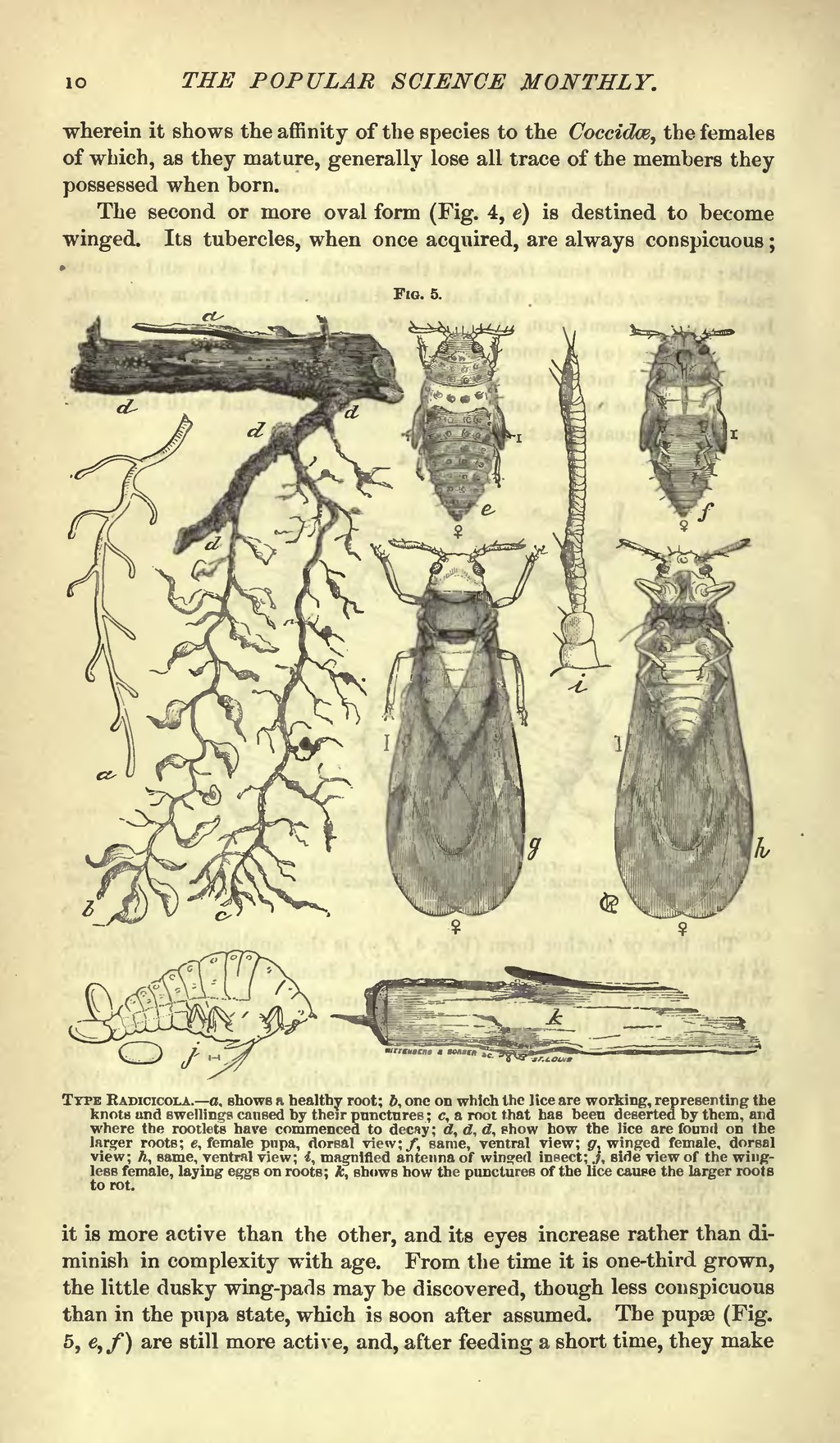wherein it shows the affinity of the species to the Coccidæ, the females of which, as they mature, generally lose all trace of the members they possessed when born.
The second or more oval form (Fig. 4, e) is destined to become winged. Its tubercles, when once acquired, are always conspicuous;
Fig. 5.

Type Radicicola.—a, shows a healthy root; b, one on which the lice are working, representing the knots and swellings caused by their punctures; c, a root that has been deserted by them, and where the rootlets have commenced to decay; d, d, d, show how the lice are found on the larger roots; e, female pupa, dorsal view; f, same, ventral view; g, winged female, dorsal view; h, same, ventral view; i, magnified antenna of winged insect; j, side view of the wing-less female, laying eggs on roots; k, shows how the punctures of the lice cause the larger roots to rot.
it is more active than the other, and its eyes increase rather than diminish in complexity with age. From the time it is one-third grown, the little dusky wing-pads may be discovered, though less conspicuous than in the pupa state, which is soon after assumed. The pupæ (Fig. 5, e,f) are still more active, and, after feeding a short time, they make
